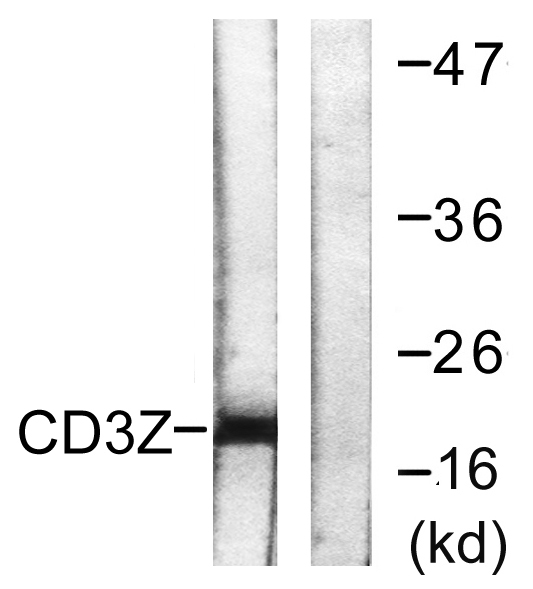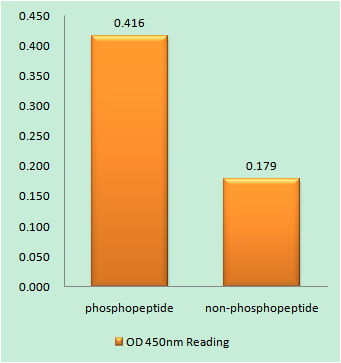
Catalog: KA1275C
Size
Price
Status
Qty.
96well
$470.00
In stock
0
Add to cart


Collected


Collect
Main Information
Reactivity
Human, Mouse, Rat
Applications
ELISA
Conjugate/Modification
Phospho
Detailed Information
Storage
2-8°C/6 months,Ship by ice bag
Modification
Phospho
Detection Method
Colorimetric
Related Products
Antigen&Target Information
Gene Name:
CD247
show all
Other Name:
T-cell surface glycoprotein CD3 zeta chain ;
T-cell receptor T3 zeta chain ;
CD antigen CD247 ;
T-cell receptor T3 zeta chain ;
CD antigen CD247 ;
show all
Background:
disease:Defects in CD247 are a cause of primary T-cell immunodeficiency [MIM:610163]. Affected individuals suffer of recurrent infections. Patients T-cell counts are very low and B-cell counts are normal.,domain:The ITAM domains mediate interaction with SHB.,function:Probable role in assembly and expression of the TCR complex as well as signal transduction upon antigen triggering.,online information:CD247 mutation db,PTM:Phosphorylated on Tyr residues after T-cell receptor triggering.,similarity:Belongs to the CD3Z/FCER1G family.,similarity:Contains 3 ITAM domains.,subunit:The TCR/CD3 complex of T-lymphocytes consists of either a TCR alpha/beta or TCR gamma/delta heterodimer coexpressed at the cell surface with the invariant subunits of CD3 labeled gamma, delta, epsilon, zeta, and eta. CD3-zeta forms either homodimers or heterodimers with CD3-eta. Interacts with SLA and SLA2. Interacts with DOCK2 and TRAT1. Interacts with HIV-1 Nef protein. Interacts with SHB.,
show all
Function:
activation of immune response, immune response-activating cell surface receptor signaling pathway, positive regulation of immune system process, immune response-activating signal transduction, immune response-regulating signal transduction, immune response-regulating cell surface receptor signaling pathway, cell surface receptor linked signal transduction, positive regulation of response to stimulus, positive regulation of immune response, antigen receptor-mediated signaling pathway, T cell receptor signaling pathway,
show all
Cellular Localization:
Cell membrane ; Single-pass type I membrane protein.
show all
Tissue Expression:
Signaling Pathway
Organismal Systems >> Immune system >> Natural killer cell mediated cytotoxicity
Organismal Systems >> Immune system >> T cell receptor signaling pathway
Organismal Systems >> Immune system >> Th1 and Th2 cell differentiation
Organismal Systems >> Immune system >> Th17 cell differentiation
Human Diseases >> Cancer: overview >> PD-L1 expression and PD-1 checkpoint pathway in cancer
Reference Citation({{totalcount}})
Catalog: KA1275C
Size
Price
Status
Qty.
96well
$470.00
In stock
0
Add to cart


Collected


Collect
Recently Viewed Products
Clear allPRODUCTS
CUSTOMIZED
ABOUT US
Toggle night Mode
{{pinfoXq.title || ''}}
Catalog: {{pinfoXq.catalog || ''}}
Filter:
All
{{item.name}}
{{pinfo.title}}
-{{pinfo.catalog}}
Main Information
Target
{{pinfo.target}}
Reactivity
{{pinfo.react}}
Applications
{{pinfo.applicat}}
Conjugate/Modification
{{pinfo.coupling}}/{{pinfo.modific}}
MW (kDa)
{{pinfo.mwcalc}}
Host Species
{{pinfo.hostspec}}
Isotype
{{pinfo.isotype}}
Product {{index}}/{{pcount}}
Prev
Next
{{pvTitle}}
Scroll wheel zooms the picture
{{pvDescr}}


















